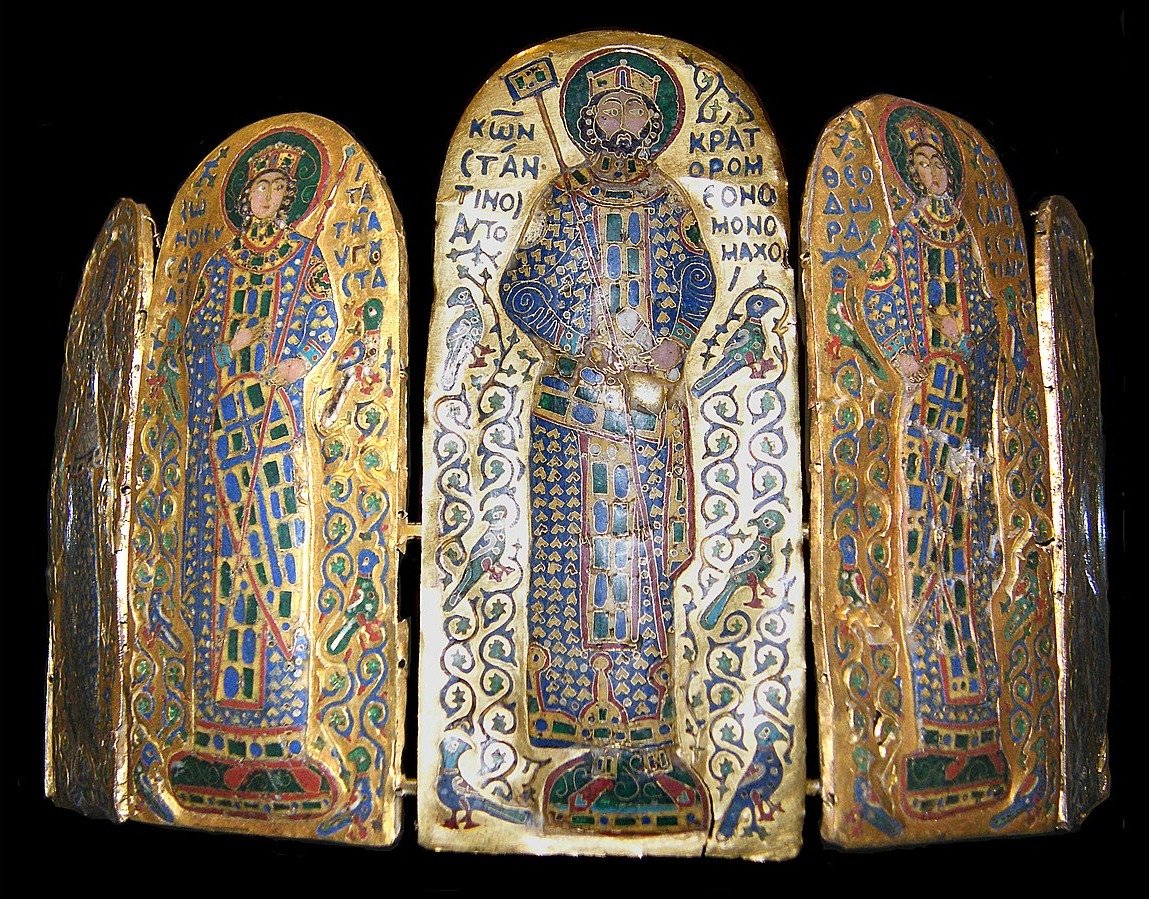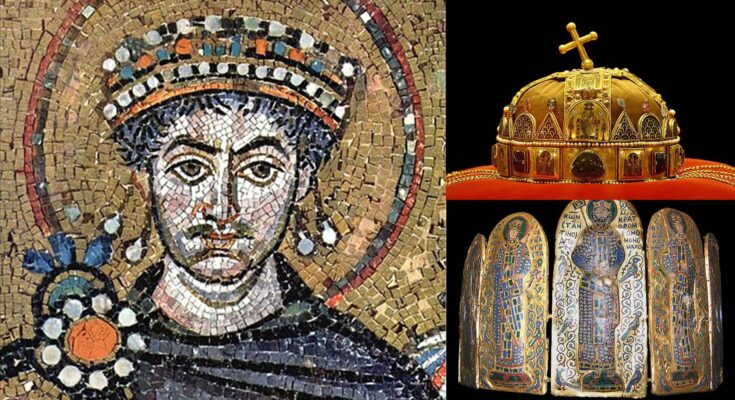From 330 AD, when Constantine the Great proclaimed his new city the capital of the Roman Empire, the emperors ruled from Constantinople until the city fell in 1453. The modern historiographical term “Byzantines” for the Eastern Roman Empire is derived from the ancient name for the city, Byzantium.
Over the centuries, the Byzantine emperors outwardly signified their imperial authority with various garments and items of jewelry. Golden crowns, often beset with precious stones and gems or decorated with colorful artistic scenes, were placed upon the heads of emperors to radiate power.
Few examples of Byzantine crowns survive today, although they are depicted in various frescoes and works of art. Moreover, the Byzantines sometimes gifted “barbarian” kings in Europe with these regal headpieces, a few of which still exist today.
Byzantine crowns
The Byzantine practice of wearing crowns probably stemmed from earlier Roman practices, despite a distaste for kingship among the Romans during the period of the Republic that extended into the Imperial era.
Successful military leaders would sometimes be crowned with laurel leaves. Later, some Roman emperors adopted the solar crown, a style closely associated with the cult of Sol Invictus, a god of the sun.
When Constantine moved the capital eastwards to Constantinople and Christianity became dominant in the empire, the emperors began to wear diadems more often than crowns. These were similar in style to those worn by Alexander the Great and his successors. However, by the 6th century AD, increasingly ornate and complex closed crowns became more popular again.

Interestingly, historian Vanessa Rousseau identifies in one academic paper that in surviving Byzantine artworks, “the empress who embodied the empire was often depicted in a more elaborate crown than the emperor.”
Centuries of contact with neighboring peoples and civilizations undoubtedly influenced the design of Byzantine crowns and over time they took on a more exotic appearance, more alien to their Greek and Roman roots.
Rousseau further notes that “the jewelry and headgear of neighboring peoples reveals the influence of Eastern headgear and hairdressing upon the evolution of the empress’s crown. Much like the decorative arts of Byzantium, the empress’s crown testifies to the fusion of Mediterranean and Eastern cultures.”
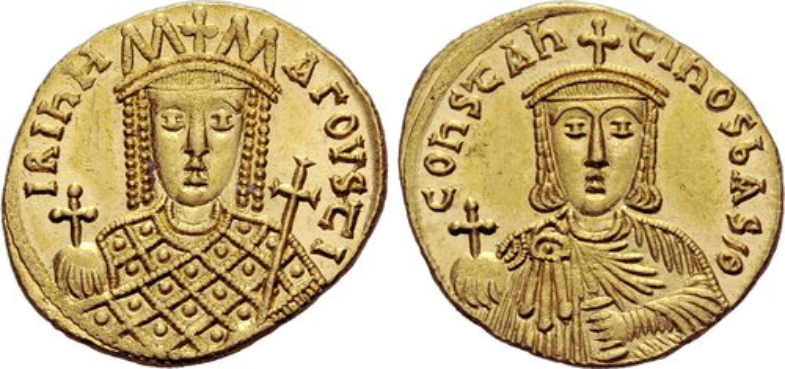
Coronations and ceremonial purpose
Crowns, diadems, and torcs often played a role in the coronation of a Byzantine emperor, although these ceremonies varied considerably over the centuries. For example, the emperor was sometimes crowned with a torc worn around the neck rather than a headpiece like a crown.
The donning of the imperial purple, usually in the guise of a cloak or other purple item of clothing may also have been more symbolically important in some cases.
Nevertheless, the use of crowns and diadems was common among Byzantine emperors. For instance, a mosaic of Emperor Justinian I in coronation dress at the Basilica of San Vitale in Ravenna depicts the emperor wearing an elaborate gem-encrusted diadem.
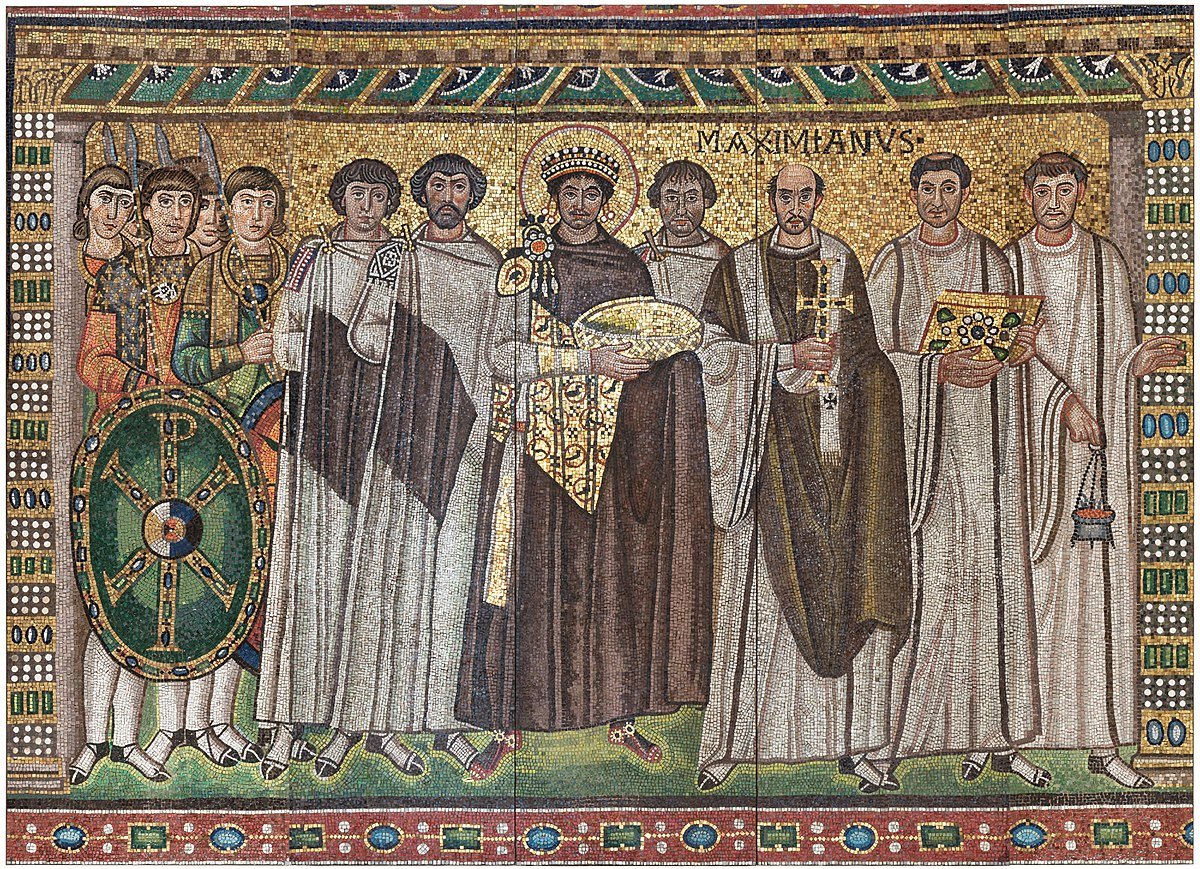
Surviving examples
The crowns of Byzantine origin or style that have survived were gifted to foreign rulers by the emperor in Constantinople.
The most famous example is the Holy Crown of Hungary which was gifted by the Byzantine Emperor Michael VII Doukas to the King Géza I of Hungary. Both men are depicted on the panels of the crown and named in Greek.
The Holy Crown served as the official coronation crown throughout most of the Kingdom of Hungary’s history, being used to crown kings starting from the twelfth century. As of the year 2000, the Holy Crown has been prominently exhibited in the central Domed Hall of the Hungarian Parliament Building.
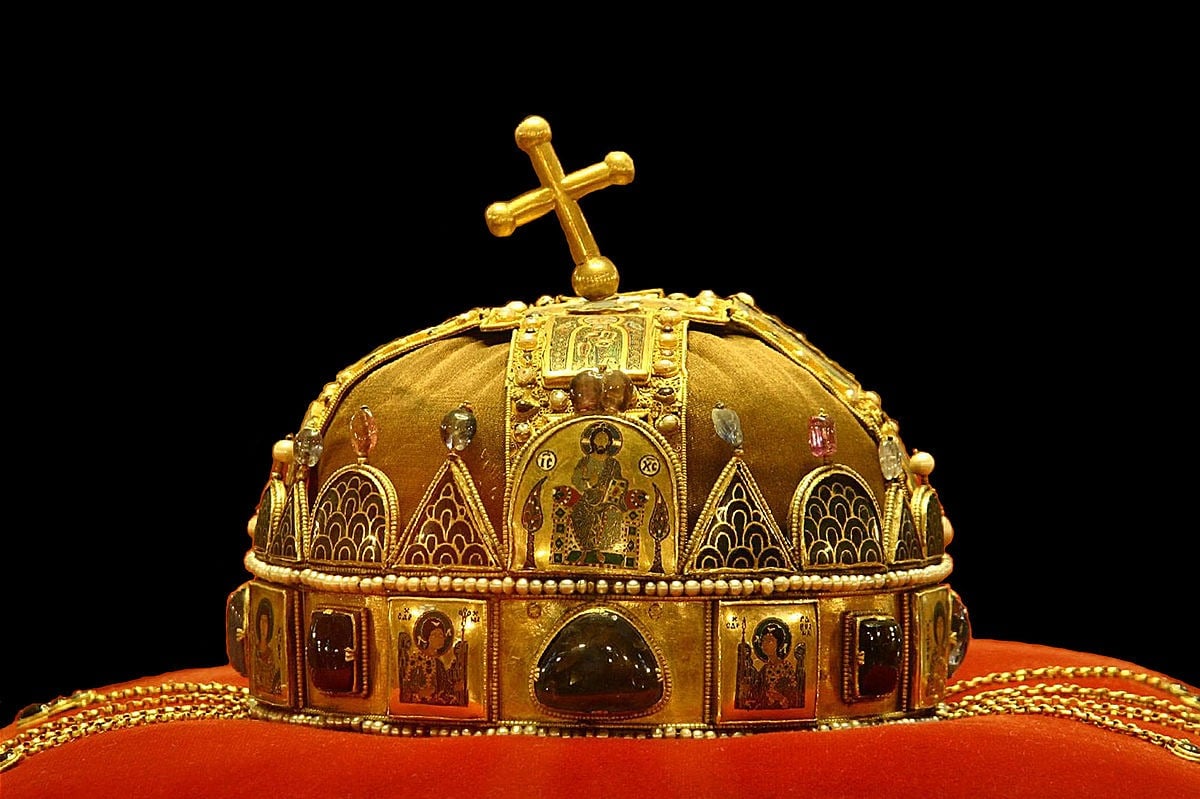
The other surviving example is the Monomachus Crown, named after Emperor Constantine IX Monomachus. The crown was discovered in 1860 by a Hungarian farmer whilst he was plowing a field and now resides in the Hungarian National Museum in Budapest.
Crafted with meticulous detail, the Monomachus Crown comprises seven gilded plates that showcase intricate depictions of prominent figures from the Byzantine era. These plates feature representations of Byzantine Emperor Constantine IX Monomachus, his wife Zoe, her sister Theodora, two graceful dancers, and two allegorical figures. It is believed that this splendid crown was most likely created in Constantinople in the year 1042.
